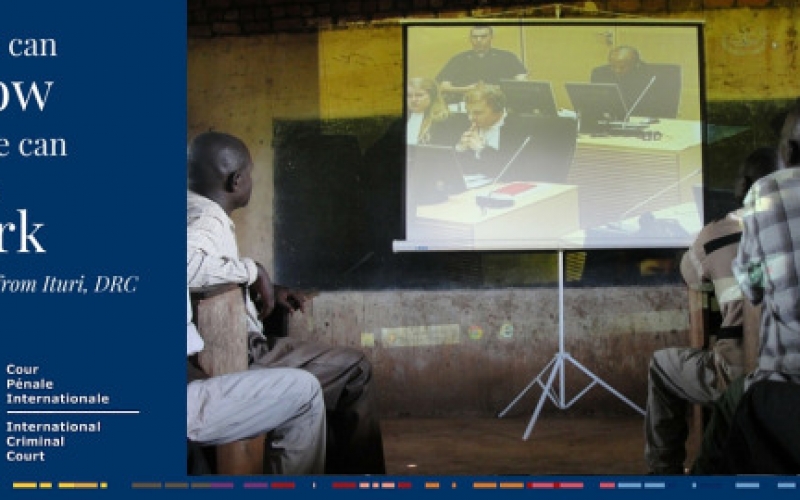ICC launches blog on outreach to affected communities

What is outreach?
The ICC’s Outreach Unit carries out activities designed to promote understanding of and support for the Court’s mandate in ICC situation countries and other directly affected communities, thereby managing expectations and enabling victims and affected communities to follow and understand ICC processes, by engaging them in a two-way dialogue.
These activities provide information, promote understanding and, hence, support for the Court’s work, and provide access to judicial proceedings. The purpose of such a two-way dialogue is to allow victims and affected communities to provide feedback to the Court, thereby integrating their views and perceptions into its activities and processes. Outreach is also vital to creating conditions conducive to supporting the Court’s operations more generally in situation countries.
Outreach is one of the most important components of the ICC’s work. When affected communities understand and can follow proceedings, respect for the rule of law and human rights at the national level is enhanced, and encourages further domestic prosecutions and deters future crimes.
Practically speaking this involves everything from engaging grassroots communities to inform them about victim’s rights, to explaining judicial proceedings, answering questions, addressing concerns, and fostering realistic expectations about the Court’s work.
Outreach around the trial of Bosco Ntaganda
On the blog, Margot Tedesco, field outreach coordinator in the Democratic Republic of Congo, describes her work in the eastern DRC:
She says that outreach sessions in affected communities are the biggest part of ICC outreach activities:
“Outreach officers set out on the roads of Ituri every time there is a major judicial development because our role is to bridge affected communities with the courtroom, 8000 km away. It is how we bring justice closer to affected communities.”
In the trial of Bosco Ntaganda, a DRC militia leader, Tedesco writes about how outreach involved a practical approach to ensure communities could see the trial as it happened. Video footage was brought to several villages, so communities would know what to expect from the trial and how it would proceed. Audio-visual programmes were projected, concerns were heard and questions were answered. She reports that, in total, 37 communities were visited in the five territories of the Ituri province. The people watched the footage with great interest and asked questions to improve their understanding of the trial.
However, there can be big challenges to effective outreach.
Tedesco reports that in some communities affected by the Ntaganda case, there was no access to electricity, internet, or television, making it difficult for the ICC to deliver information.
Tedesco believes that victims and their families are keenly interested in knowing what is going on with ICC trials. As one villager affected by the Ntaganda trial stated: “Today, you screened images for us, so we could see with our own eyes what is happening in The Hague. Before we followed the cases through the voice of others”. He continues: “Bosco Ntaganda might be found guilty or innocent, but we want justice to do its work”.
The importance of outreach to communities affected by the ICC’s work in The Hague cannot be understated. After all, it is not enough that justice is done; it must be seen to be done. The Court’s new blog will go a long way to ensuring that this crucial work does not go unrecognized.
Learn more about our activities to promote ICC communication
Making Justice Visible - Communications and Outreach
DRC: 10 facts about the ICC Ntaganda trial
How can the ICC use tech to improve its outreach?
Improving victim participation in the Ongwen case: lessons from Lubanga
ICC success depends on its impact locally
Sign up for our weekly updates to get the latest GlobalJustice news.
